-


Computex is the third major show we attend this year, and it looks like it's here to remind us about all the innovation and work happening in the hardcore computing arena. After all, while mainstream PC sales have stagnated, the segment occupied by computer enthusiasts, gamers, and e-sports has continued to flourish.
While CES is simply immense, covering anything from consumer appliances to car tech and everything in-between, and MWC is dedicated to mobile technology and smartphones, Computex is PC power user haven.
That notion was fueled this year thanks to AMD's comeback and Intel's announcements to counter those moves. But along with them, there were dozens of relevant announcements during the show (see our Computex 2017 coverage). Now as usual, here's the shortlist of products that caught our attention the most while touring Computex 2017's show floor.
-
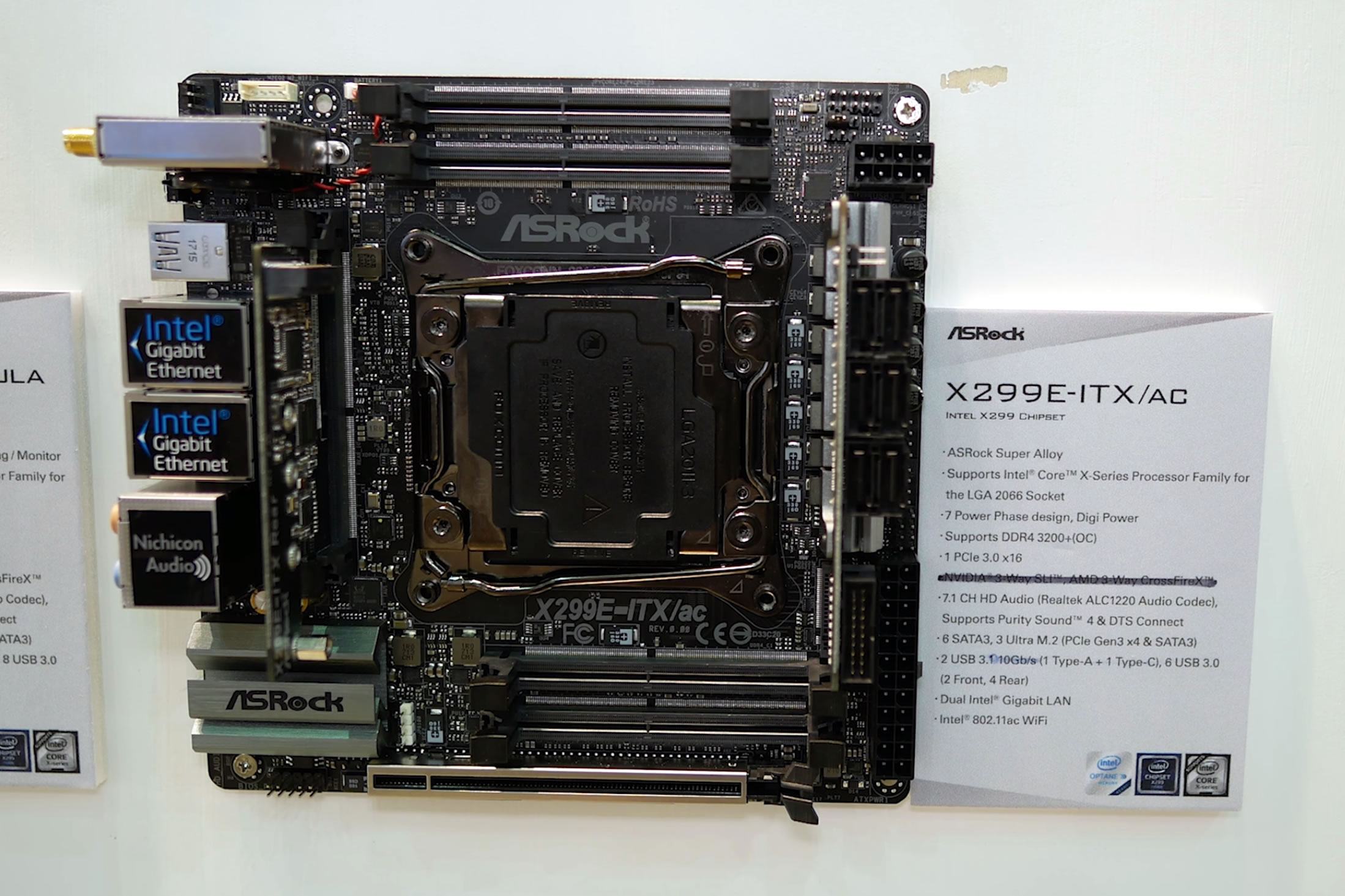
Asrock X299-ITX/ac
One of the most surprising finds for me at Computex 2017 was Asrock's upcoming Mini-ITX motherboard for Intel Core X processors using that rather large LGA2066 socket.
I was on the hunt for a Mini-ITX Ryzen board and instead found this and I have to say it's a bit of a masterpiece. Despite its small size, the X299-ITX/ac does a really good job of taking full advantage of Intel's X299 platform. Naturally you have support for the Core i9-7980XE, if dropping $2000 on a CPU is a reality for you, quad-channel DDR4 memory via four SO-DIMM slots, three PCIe 3.0 x4 M.2 slots along with the more standard stuff for a small form factor board such as Wi-Fi.
Quad-channel memory support is an amazing feat considering the company's X99 model was limited to dual-channel. Not only that but including the kind of VRM required to support 165-watt CPUs on such a small motherboard is an impressive engineering achievement in itself.
-
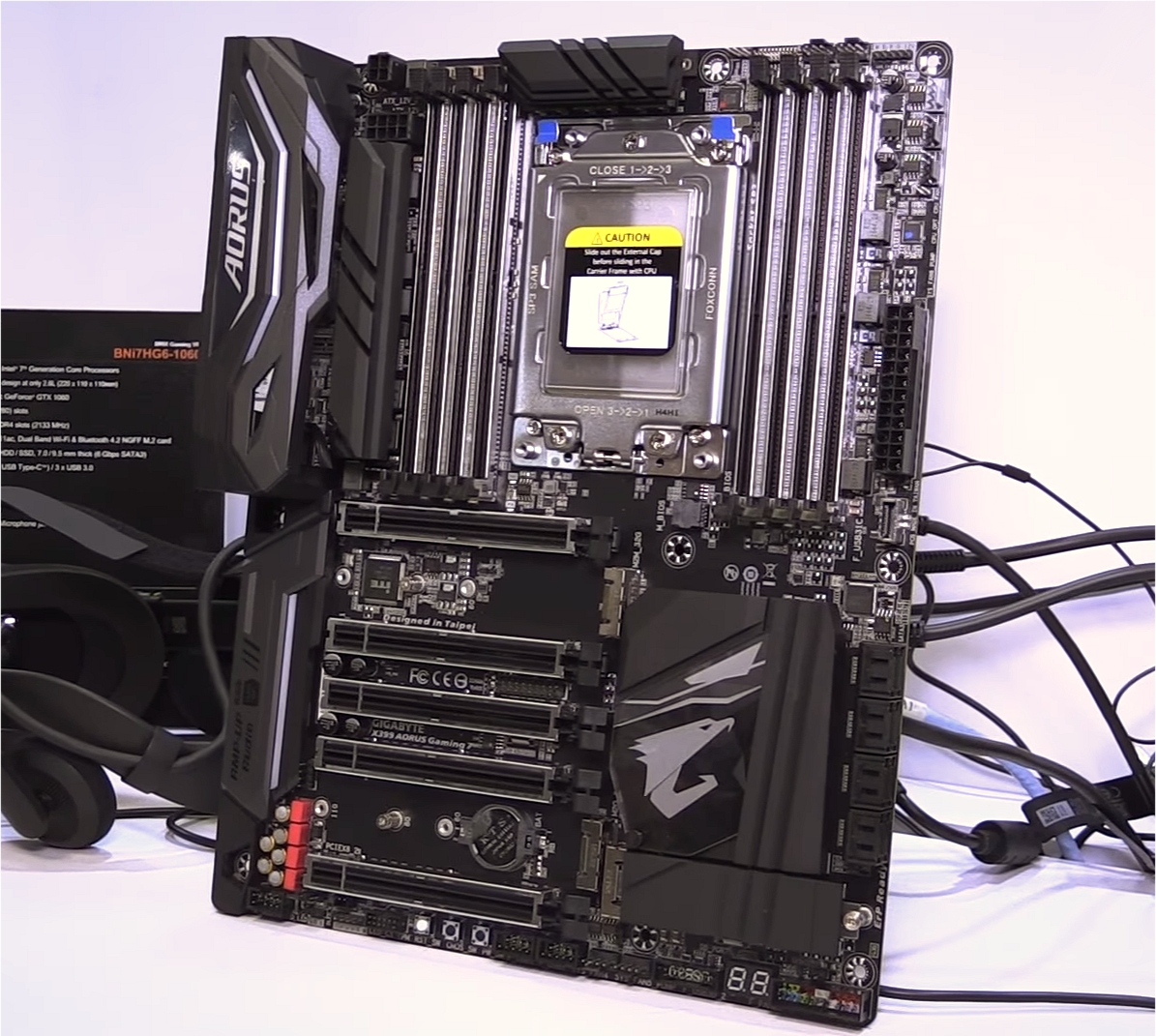
Gigabyte X399 Aorus Gaming 7
I was really keen to check out AMD X399 boards and there were plenty on display. The Gigabyte X399 Aorus Gaming 7 was the one that stole the show for me.
AMD's Threadripper CPUs support quad-channel memory, so on either side of the massive CPU socket we find four banks of DIMM slots. The DIMMs feature steel reinforcing along with embedded RGB lighting. There are three M.2 slots and one of them is hidden under the chipset heatsink. So Gigabyte has created something similar to MSI's M.2 Shield, though hopefully this works a little better and it certainly looks like it will. Audio is provided by the Realtek ALC 1220 codec and wired LAN via an embedded Killer E2500 network controller.
The CPU will be powered by an 8 plus 4-pin connector, or at least the extra 4-pin will be optional. The demo board on display only featured a 6-phase VRM, but Gigabyte did state that the production model would have an 8-phase Vcore VRM using sporting International Rectifier 3553 MOSFETs, with an IR 35201 for the voltage controller.
The board has five PCI-Express x16 slots and an array of OC buttons as well as a diagnostic POST LED. Since X399 will bring support of up-to 64 PCIe Gen3 lanes bringing anything and everything multi-GPU support multi-GPU into play, including full-on quad GPU support, Gigabyte has designed the X399 Aorus Gaming 7 with that in mind.
Threadripper will likely see its official announcement late June, with a tentative release date on August 10th.
-

Cooler Master MasterCase H500P
This is without question one of the most unique looking computer cases I've seen in a very long time.
I came to Cooler Master's booth to check out the new Cosmos C700P, however I came across the MasterCase H500P and loved it. This is the latest installment in the HAF (High-Airflow) series. The design manages to be aggressive but also clean and elegant at the same time. The tempered glass side panels and RGB LED lighting help give it some flare as well.
Crammed at the front of the case are two 200mm fans which are again RGB lit. They can force a huge amount of air through the case and I really like how they are visible through the front window. Cooler Master has done a good job of showing the cooling off without inhibiting its ability to work efficiently.
A clean build can be easily achieved with the help of a two-part PSU cover and several additional covers at the front and backside of the MB tray. The H500P should be available later this year, around September, and should retail for just $140.
-

Corsair Concept Zeus
Currently I'm using the Logitech G900, which is great for playing games wirelessly, performance is excellent and certainly lag free. Unfortunately it doesn't last more than a few days before the cable is required for charging, it's not a big deal but I do need to make sure the cable is handy at all times.
Corsair has set out to solve this minor inconvenience and in doing so attack a few other issues as well. Essentially what they have done is create a Qi charging mousepad, so you can charge your mouse by leaving it on the mouse pad. Additionally, the mouse pad can charge your phone while you're at the PC. For phones that don't support Qi wireless charging Corsair has developed a Lightning and micro-USB charging dongle.
Corsair says this is still a working concept, not even reaching the prototype phase yet. That said, what they demoed worked well and looked like a complete product to me. The complete mouse specs haven't been released though Corsair told me they're aiming for a 36 hour run time from a single charge.
-
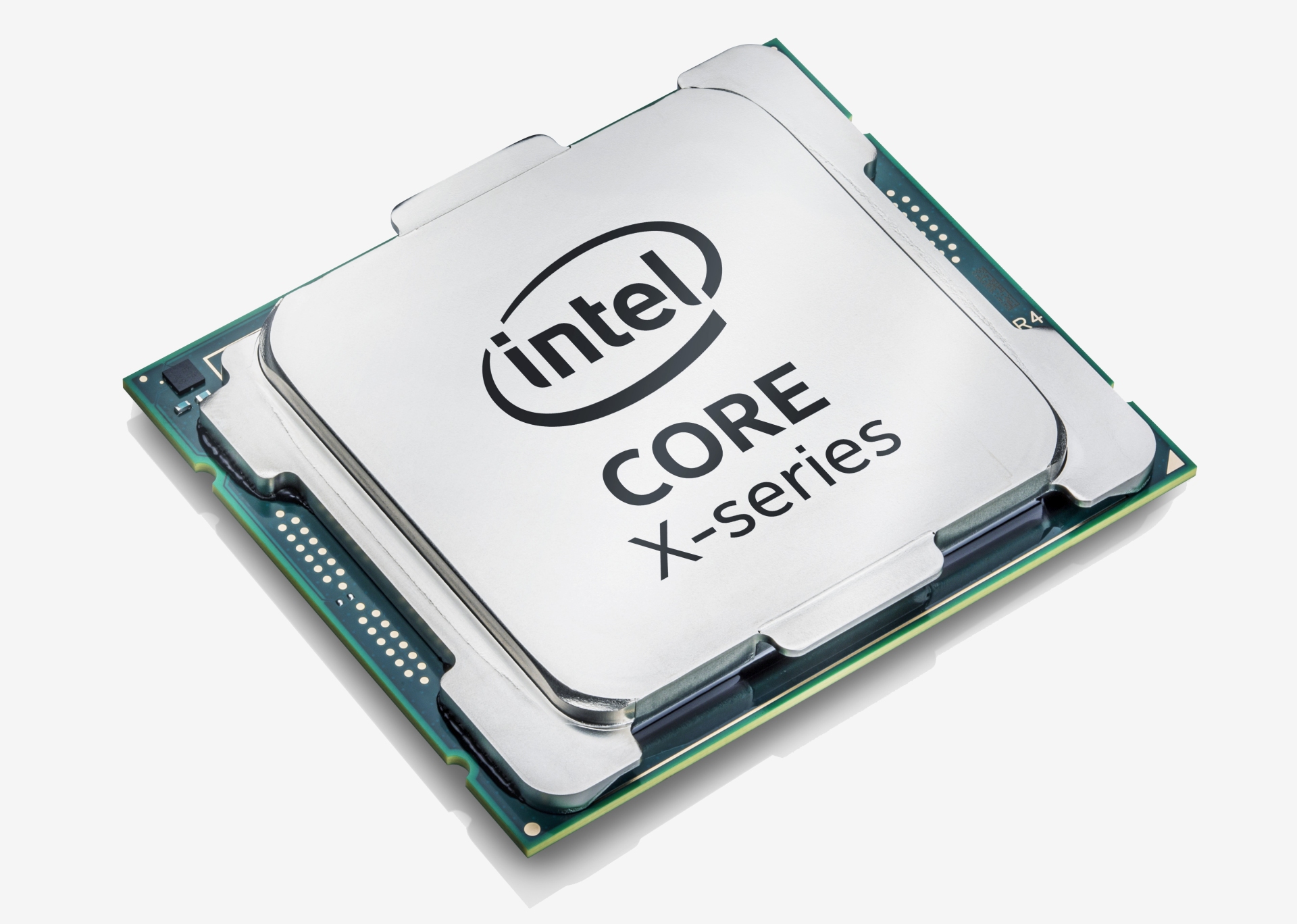
Intel Core i7-7820X
The 8-core/16-thread Core i7-7820X will come in at $600. That means we are seeing a notable 40% reduction in price when compared to the 10-core model and just a 20% reduction in core assets.
At that price the 7820X will come in 20% more expensive than AMD's Ryzen 7 1800X, so it will be interesting to learn how the two compare. It comes clocked at 3.6 GHz for all cores but can boost as high as 4.5 GHz, a higher clock speed than what Ryzen can currently achieve.
Intel has rated the CPU with a 140 watt TDP. When compared to the Core i9 models which offer 44 PCIe lanes, the 7820X is limited to 28, though this is still plenty for most power users. We anticipate this new 8-core model should be the perfect option for enthusiasts and power users alike.
-

Nvidia Max-Q Design = Thinner gaming laptops
Ever since Pascal debuted we started to see slimmer designs on true gaming-capable laptops, most of them powered by the GTX 1060. So while huge and not-very-mobile devices have its place, most gamers will likely be pleased with something more portable to be carried on a daily basis.
According to Nvidia's CEO, Max-Q design will make future machines three times thinner and three times faster than what we have today. Big claim. Nevertheless, backing up Jen-Hsun Huang's words, several laptop manufacturers are readying their first wave of Max-Q laptops to debut as soon as late June. Vendors include Acer, Alienware, Asus, Clevo, Gigabyte, Hasee, HP, Lenovo, Maingear, MSI, Origin PC, Sager, Scan and XoticPC.
Various parts of the laptops are optimized and refined through Max-Q, such as its overall design, chips, game drivers, thermal and electrical components, and Pascal-based GPUs. So, expect super-slim, power-efficient laptops with GTX 1060, GTX 1070, and GTX 1080 cards that perform better without overheating.
Huang demonstrated a Max-Q laptop, the Asus Rog Zephyrus, powered by a GTX 1080 using a slim 5-pound body. Certainly looking forward to it.
-
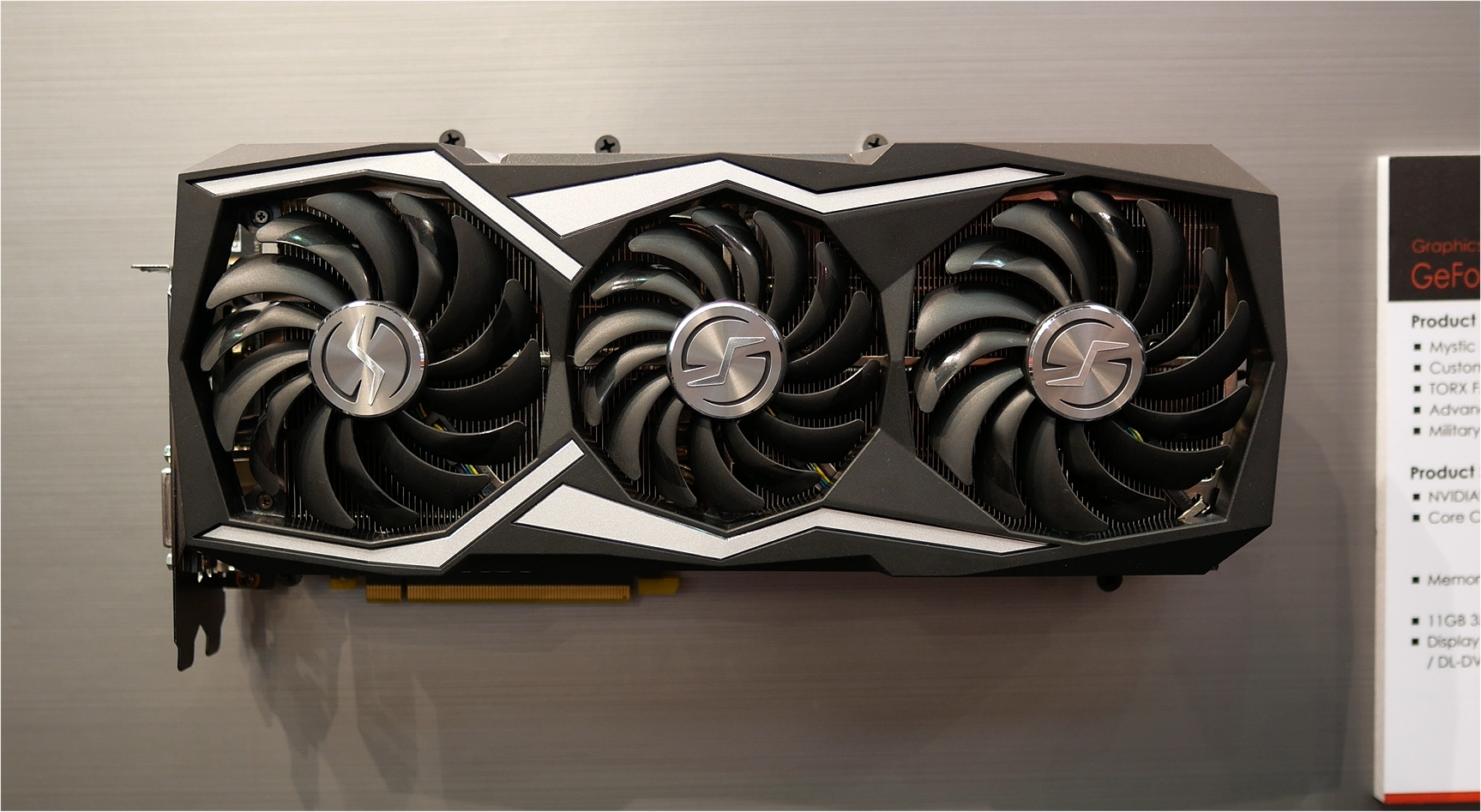
MSI Lightning Z GTX 1080 Ti
MSI's Lightning range is one of my favorite graphics cards series. The previous GTX 980 Ti and R9 290X models were particularly good, however unless you were building a black and yellow themed rig they did look out of place. This time around MSI has gone with a more neutral black, white and silver theme.
As you might have guessed providing the bling is a plethora of RGB lighting, though MSI has done a nice job here. Using translucent plastic to carry the light from the source, it provides a really sleek effect, similar to how G.Skill's RGB memory looks.
Fancy lighting aside the GTX 1080 Ti Lightning Z looks to be the real deal. Strapped onto the PCB is a bulky 2.5 slot cooler with triple Torx 2.0 fans. The fans force air over two massive arrays of aluminum fins which are connected using over half a dozen copper heatpipes. Flipping the card over we find a beautifully crafted backplate featuring some cool looking cut-outs and a good peak at that translucent acrylic strip for the RGB lighting.
MSI has gone with a 14+3 power phase design and a double up design which helps to spread the thermal load. Onboard MSI uses International Rectifier controllers and advertises a board TDP of 350 watts which is 100 watts above Nvidia's reference spec. The card carries three PCIe 8-pin connectors, each capable of delivering up to 150 watts of power, so that's pretty insane.
The Lightning Z supports three clock profiles. Out of the box the card runs in the Gaming mode (slightly overclocked), but there's also silent and Lighting which takes it to more extreme clock speeds. Around the I/O end, connectivity includes dual link DVI outputs, dual HDMI 2.0 outputs and two DisplayPorts. There's no official word on availability or pricing yet, but MSI tells us to expect more details in the coming month.
-
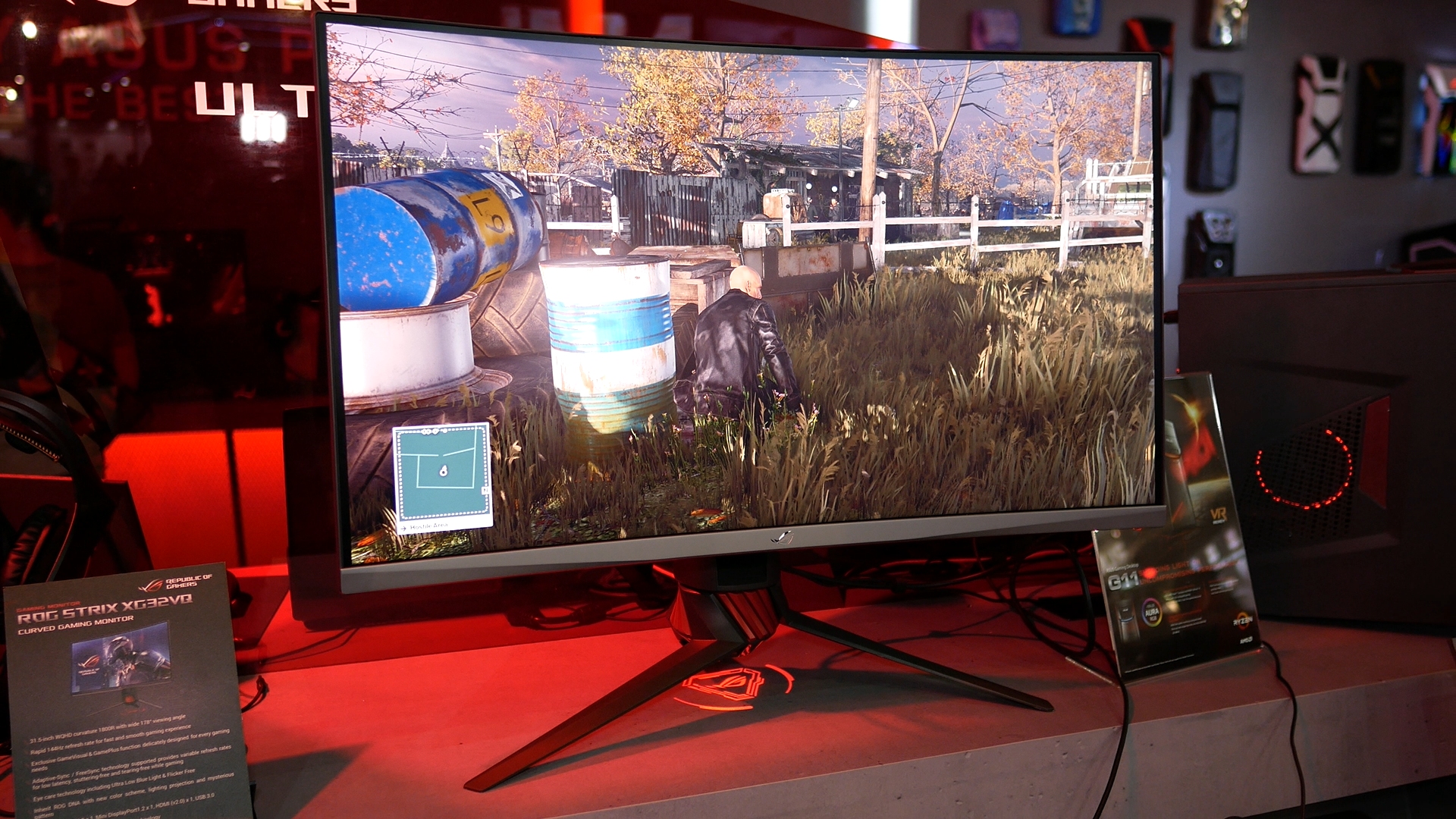
Asus ROG Strix XG32VQ
The most impressive gaming monitor on display was the Asus ROG Strix XG32VQ, a gorgeous looking 31.5" curved IPS panel. The display is curved on an 1800R radius for a better view of the far edges and corners. As this is an IPS panel view angles are great offering 178° so the picture quality is preserved even if the viewer is not facing the screen dead on.
Resolution-wise, we are looking at WQHD 2560x1440 and Asus says they have prioritized performance over pixel density, so this is a 144Hz panel. Inputs include dual DisplayPort 1.2 ports and one HDMI 2.0 port. Also included are a pair of USB 3.0 ports.
Asus believes given its size and flexibility, it's easy to see the Strix XG32VQ replacing a traditional TV in dorm rooms and small apartments, especially for cord cutters addicted to streaming Netflix, YouTube, and Twitch.
-
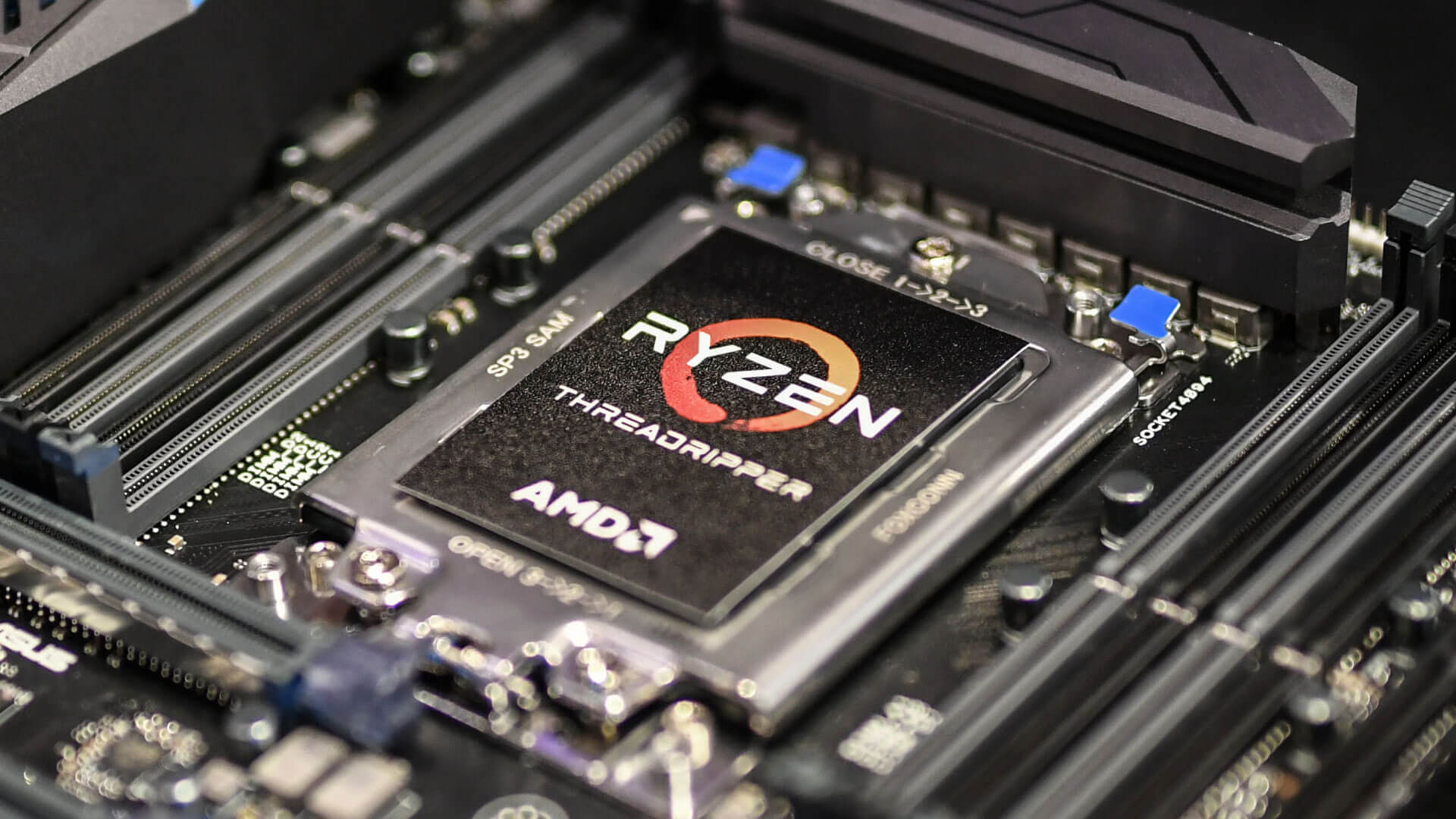
AMD Ryzen "Threadripper" CPU
AMD is hard at work on a new line of CPUs that will bring its Zen architecture to the high-end desktop market. From 10-core (20-thread) chips working at 125W TDPs, all the way up to the crowning jewel of AMD's upcoming enthusiast lineup: the Ryzen 9 1998 and 1998X, 16-core / 32-thread monsters with a base / boost clock of 3.2GHz / 3.6GHz and 3.5GHz / 3.9GHz, respectively, and 155W TDPs.
All Ryzen Threadripper CPUs will have quad channel DDR4 support as well as the full 64 PCIe Gen3 lanes. That is 20 more lanes than Intel's highest end Skylake-X Core i9 processors and incredibly 40 more lanes than its 8-core and 6 core Core i7 models. So AMD has Intel against the ropes when it comes to PCI Express lanes, those X399 motherboards are going to be quite incredible.
Now, if all these multi-threaded talk doesn't excite you, how about AMD putting more pressure to Intel to take them out of their comfort zone. Also, more affordable Ryzen 7 processors. Woot!
Image credit: PC Gamer
-

Thermaltake Level 20
This beautiful creation is a concept chassis that Thermaltake has been working on for a very long time. The case looks like it'd lend itself well to a modular type design, almost like a Lego block PC, but Thermaltake was not sharing full details at the show. What they did say is that each chamber is designed to house different hardware.
For example, at the front of the case you can install radiators, fans, pumps and reservoirs like Thermaltake have in this demo build, or you could simply fill it with storage drives. Then up the top we obviously have the power supply and this module also houses all the front I/O. Finally, we have the largest module which houses the motherboard, graphics card, and so on.
The glass panels all open on hinges and this provides easy access to the hardware inside. I have to say coming from the Level 10's unique but also highly impractical design, the Level 20 not only looks better but I feel like this is a case you could easily live with.
-

MSI GT75VR Titan
MSI had plenty of new gaming laptops on display at Computex this year, and the GT75VR Titan was the biggest and beefiest of them. This high-end laptop can be configured in one of three ways: a single GTX 1080, dual GTX 1070 SLI, or just a single GTX 1070. Helping unleash all that GPU power is the Core i7-7820HK processor and that's one of the most powerful Kaby Lake-H CPUs available right now.
The GT75VR Titan also sports a mechanical keyboard with customizable per-key RGB lighting. This keyboard is the first mechanical type to be designed specifically for a gaming laptop. The previous GT80 Titan, for example, was a 18.4-inch monster using a mechanical keyboard that was essentially designed for desktop use. The new Titan is considerably more portable with a 17" footprint and a low-profile tactile keyboard.
The keyboard was designed by SteelSeries and I have to say despite the low profile, the feedback is excellent. Complementing the new keyboard is a really nice palm rest that has a diamond-shaped cut around the offset arrow keys. This is a softer material than the hard plastic or brush aluminum that most gamers are used to.
MSI tells me there will be multiple 17.3" screen options. The base model is a 1080p TN panel supporting a 120Hz refresh rate, but if you go for the GTX 1080 option or even the dual 1070's then perhaps the 4K option with 100% Adobe RBG coverage will be the way to go. If you prefer, a 1080p IPS version will be offered as well though not many details were given about that config.
The Titan is designed to be a full-on desktop replacement with space for up to 64GB DDR4 RAM, a 2.5-inch HDD and two NVMe M.2 SSDs.
Everything mentioned so far is great, but what ultimately caught my eye was the stuff inside. MSI was keen to show us their new Cooler Boost 5 solution which allows the laptop's CPU to overclock all the way to 4GHz. The system combines two Whirlwind Blade fans with 12 heat pipes and four ventilation points. Pricing info is yet unknown for the various configurations, but you can bet they won't be cheap.
-

Read This Next...
- TechSpot's full coverage of Computex 2017
- Memorable Overclocking-Friendly CPUs
- The best CPUs you can buy right now
For lighter reading...
